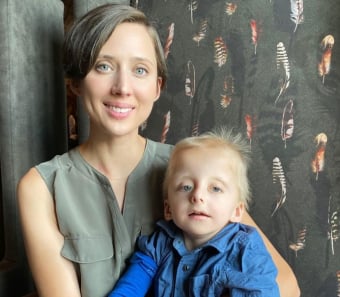
Are you taking folic acid? Do you know it’s good for you? Well, maybe not, according the results of a recent SC telephone survey by the SC Birth Defects
Prevention Program. In 2017, the Program conducted a random telephone survey of 1008 women of childbearing years (ages 18-45) to assess their knowledge
of folic acid and use of multivitamins finding that only 30% of women surveyed knew about the importance of folic acid and were taking it regularly.
That is a significant decline from 54% of women in a similar survey done just ten years ago.
Let me back up – for those who aren’t familiar with folic acid – it’s a B vitamin, naturally
present in foods like leafy green veggies, beans and avocados. It’s generally good for you with all sorts of benefits including improved cardiovascular
and mental health. But the main reason to know about folic acid is its ability to prevent birth defects.

In the 1980s, Dr. Dick Smithells, a pediatrician in the UK, discovered that folic acid significantly lowered the risk of recurrence of severe birth defects
of the brain and spine among women who had a previously affected infant. These defects are known as neural tube defects or NTDs (spina bifida, anencephaly,
and encephalocele). It was later demonstrated that women who take a supplement with folic acid can prevent not only a recurrence of NTDs in their future
children, but that low risk women can prevent the first occurrence by taking this vitamin.
Further studies confirmed Dr. Smithells’ work, though for over a decade it was thought by the medical establishment to be too simple of an answer to be
an effective prevention.
In the early 1990s, the utility of folic acid for birth defect prevention was accepted, and the CDC funded prevention programs in both SC and Texas, two
states with a high incidence of NTDs. Through educational outreach programs encouraging all women of childbearing age to take 400 mcg of folic acid
daily (and even more if they had a prior affected pregnancy) the SC program, based at the Greenwood Genetic Center, has reduced the incidence of NTDs
in the state by 60%. Saving millions of healthcare dollars each year and even more importantly, leading to 70 more healthy babies in our state annually.
So back to the survey, if fewer women are taking folic acid, are the rates going back up?
Well, no, and that’s great news! But why not?
Well, there’s more to the story. GGC co-founder, Dr. Roger Stevenson, and others worked with the FDA to mandate the fortification of cereal grain flour
with folic acid. So since 1998, folic acid has been added to breads, pastas, cereals, etc. The amount in the fortification (140 mcg per 100g of milled
flour) doesn’t meet the recommended 400 mcg, but apparently it has been making an impact. So it seems that a combined effect of folic acid supplementation
(with multivitamins) and folic acid fortification (in grains) is doing a pretty good job.
However, while the rate of NTDs has declined significantly thanks to folic acid, there are still some potentially preventable NTDs occurring, so we can’t
rest. We are still focused on educating women about the importance of folic acid. That’s where the telephone survey comes in. here’s what we learned…
We’re getting the message out to healthcare providers to share this with their patients. We target these providers with information and resources to share
and will continue to do so. This data also helps us get an idea of which populations that our message has been missing, so we can adjust accordingly,
as well as specifically what kinds of information (dosage, timing, etc.) they are lacking.
As we celebrate Birth Defects Awareness Month every January, we look to refine our role – how can we best get this life-saving message out to those who
need it most. We resolve, as 2018 begins, to continue with what’s working and to adapt and fill the gaps ensuring that fewer families are touched by
these preventable birth defects.
For more information about folic acid or the SC Birth Defects Prevention Program, contact Jane Dean, RN at [email protected] or 1-800-676-6332.
